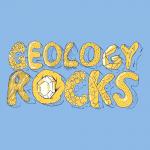|
This section contains 1,692 words (approx. 6 pages at 300 words per page) |

|
Overview
During this period, the study of the Earth began to change dramatically from a nearly complete reliance on religion for an explanation of the Earth's features to the beginnings of a more scientific approach. Major steps in explaining the origins of the Earth, its age, the origins of the oceans, and the Earth's geologic features were taken by Agricola (1494-1555), Leonardo da Vinci (1452-1519), Thomas Burnet (1635?-1715), Nicolas Steno (1638-1686), Robert Hooke (1635-1703), and others. Although geology could not yet be considered a science, by the end of the seventeenth century, it was nearly at that point.
Background
Through most of recorded human history attempts have been made to explain how the Earth was formed and why it looks as it does. Every culture, it seems, has developed a creation myth, and many cultures invoked supernatural powers that formed...
|
This section contains 1,692 words (approx. 6 pages at 300 words per page) |

|


